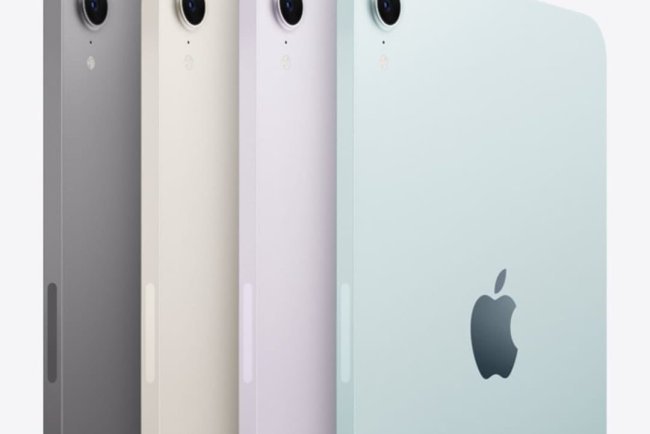The iPad Mini, often referred to as the “small but mighty” tablet in Apple’s lineup, is designed to offer the full iPad experience in a more compact form. It appeals to users who value portability without sacrificing power. Below is an in-depth look at the iPad Mini’s specifications, along with its pros and cons.
Specifications Overview (2024 version)
• Display: 8.3-inch Liquid Retina display, 2266 x 1488 resolution, True Tone, wide color (P3)
• Chipset: A15 Bionic chip with 6-core CPU, 5-core GPU
• Storage Options: 64GB, 256GB
• Camera:
• Rear: 12MP wide camera (f/1.8)
• Front: 12MP ultra-wide front camera (f/2.4), Center Stage support
• Battery Life: Up to 10 hours of web surfing or video watching
• Operating System: iPadOS 17 (upgradable)
• Connectivity: Wi-Fi 6, 5G (cellular models), USB-C port
• Dimensions: 195.4 x 134.8 x 6.3 mm
• Weight: 293g (Wi-Fi) / 297g (Wi-Fi + Cellular)
• Apple Pencil Support: 2nd Generation
Pros of iPad Mini
1. Compact and Portable:
• The iPad Mini’s 8.3-inch display is ideal for those who want a tablet that’s easy to carry and use with one hand. Its lightweight design makes it great for reading, taking notes, or on-the-go productivity.
2. Powerful A15 Bionic Chip:
• Despite its small size, the iPad Mini packs the A15 Bionic chip, which ensures high performance, smooth multitasking, and lag-free gaming. It’s on par with larger iPads in terms of processing power, making it versatile for creative tasks, work, and entertainment.
3. Sharp Display:
• The Liquid Retina display delivers excellent brightness, color accuracy, and sharpness. The P3 wide color gamut, True Tone, and anti-reflective coating enhance the viewing experience, whether you’re watching movies, editing photos, or browsing the web.
4. 5G Connectivity:
• For users who need fast mobile internet, the iPad Mini offers 5G support on cellular models, ensuring super-fast download and streaming speeds, which is great for remote work and media consumption.
5. Apple Pencil (2nd Generation) Compatibility:
• The iPad Mini works seamlessly with the 2nd Gen Apple Pencil, making it a great choice for artists, students, and professionals who need precise note-taking, sketching, or annotation capabilities.
6. Camera Improvements:
• The 12MP ultra-wide front camera with Center Stage is ideal for video calls, as it automatically adjusts to keep you in the frame. The rear 12MP wide camera delivers good-quality photos and 4K video recording, which is impressive for a tablet of this size.
7. USB-C Port:
• The USB-C port offers faster data transfer speeds and wider compatibility with external devices compared to the older Lightning port. It’s more flexible for connecting to displays, storage drives, and other peripherals.
8. Decent Battery Life:
• Up to 10 hours of battery life ensures that you can use it for a full workday without needing to recharge, making it reliable for productivity and entertainment on the go.
Cons of iPad Mini
1. Limited Storage Options:
• With only 64GB and 256GB storage configurations, the iPad Mini lacks a middle option. The 64GB model might feel restrictive for those who use a lot of apps or store high-quality media files, while the jump to 256GB increases the price significantly.
2. No Face ID:
• Unlike the iPad Pro, the iPad Mini still relies on Touch ID embedded in the power button. While Touch ID is fast and reliable, some users may miss the convenience and futuristic feel of Face ID.
3. Lack of Pro-Level Features:
• The iPad Mini does not support advanced features like the M-series chips, ProMotion (120Hz refresh rate), or the LiDAR scanner found in the iPad Pro lineup. For creative professionals seeking the best of the best, the Mini may feel limited.
4. Expensive for its Size:
• While the iPad Mini offers a lot of power in a small package, its price is relatively high for its size, especially when compared to the entry-level iPad or even other tablets in the market. Adding accessories like the Apple Pencil or a case further increases the cost.
5. No Headphone Jack:
• The removal of the headphone jack may be inconvenient for users who still prefer wired headphones. While the shift to wireless has become common, some users might still miss the option, especially for professional audio work.
6. No MagSafe Support:
• Unlike some other Apple devices, the iPad Mini does not support MagSafe charging, which could be a drawback for those who have invested in the MagSafe ecosystem.
7. Small Screen for Multitasking:
• Although the iPad Mini is great for single-task usage, its small screen can feel cramped when multitasking with split-screen apps. For users who need a larger display for heavy multitasking or content creation, the iPad Air or iPad Pro might be more suitable.
Conclusion: Is the iPad Mini Worth It?
The iPad Mini is a fantastic device for those who value portability, high performance, and Apple’s robust ecosystem in a compact form. Its A15 Bionic chip, 5G support, and compatibility with the Apple Pencil 2 make it a versatile tool for professionals, students, and everyday users.
However, it’s not without limitations. The lack of storage options, absence of advanced features like ProMotion, and relatively high price might give some users pause. If you’re looking for a lightweight tablet that can handle everyday tasks, light productivity, and media consumption on the go, the iPad Mini is a top contender. But for users who need a larger screen or pro-level features, exploring the iPad Air or iPad Pro might be more beneficial.
Ultimately, the iPad Mini is a great “small but powerful” device with specific use cases, making it ideal for users who prioritize mobility and versatility over size.






















